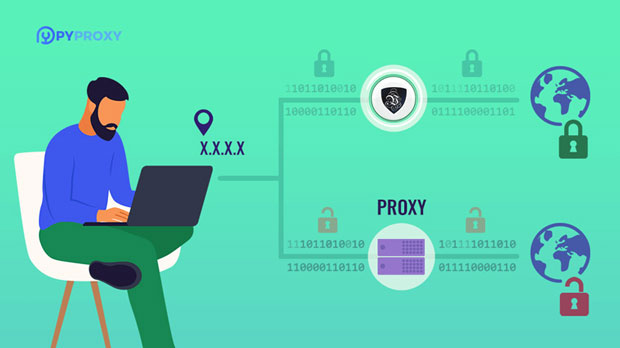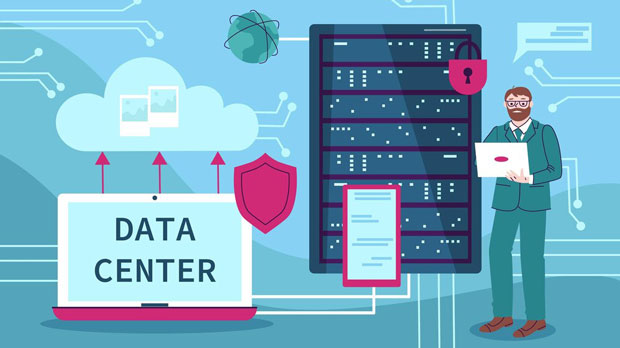When it comes to online privacy and anonymity, IP masking plays a crucial role in protecting users' identities. Two popular tools for this task are PYPROXY and FoxyProxy, which are widely used to conceal a user's IP address and bypass internet restrictions. However, when comparing these two tools in terms of their ability to effectively mask an IP, several factors must be considered, such as speed, security, and ease of use. This article delves into these aspects, providing an in-depth analysis to determine which of the two offers better IP masking capabilities. Understanding IP Masking and Its ImportanceIP masking is a technique used to hide a user’s real IP address by routing their internet traffic through another server, effectively making it appear as though the traffic is coming from a different location. This process helps enhance online privacy, security, and anonymity, making it harder for third parties such as websites, hackers, or advertisers to track the user's online activities. Furthermore, IP masking allows users to bypass regional restrictions or censorship, enabling access to content that might otherwise be blocked in their location.For individuals concerned about their digital footprint, as well as those looking to access geo-restricted content, choosing the right tool for IP masking is vital. Both PyProxy and FoxyProxy provide services designed for this purpose, but how do they compare in terms of performance, usability, and reliability?How PyProxy Works for IP MaskingPyProxy is a Python-based tool that allows users to proxy their internet traffic through a series of servers. Its primary feature is to enable users to route their online requests through different IP addresses, thus masking their original one. PyProxy can be configured to work with various proxy servers, providing a diverse range of options for IP routing. It is often chosen by tech-savvy users because of its flexibility and the ability to customize proxy configurations through scripting and Python code.One of PyProxy’s advantages is its versatility in handling different proxy types, including HTTP, SOCKS5, and SSL proxies. This wide range of options allows users to select the type of proxy that best suits their needs, whether it's for security, speed, or bypassing geographical restrictions.Key Advantages of Using PyProxy1. Flexibility and Customization: Since PyProxy is Python-based, it provides users with the ability to customize configurations based on their specific needs. This is especially beneficial for users who require more advanced setups, such as rotating proxies or integrating with specific tools or platforms.2. Support for Multiple Proxy Types: PyProxy supports various types of proxies, including SOCKS5, which offers more security than HTTP proxies by allowing encryption of the data traffic.3. Open-Source Community: Being an open-source tool, PyProxy benefits from community-driven updates and support. Users can modify and contribute to its development, ensuring that the tool stays relevant and functional.4. Anonymity and Security: With the ability to connect through a range of proxy types, PyProxy enhances user anonymity by providing multiple layers of IP masking.Challenges of Using PyProxy1. Technical Knowledge Required: PyProxy may not be the easiest tool for beginners. Its reliance on Python and the need for configuration scripts mean that users without technical knowledge may find it difficult to set up and use effectively.2. Limited User Interface: Unlike more user-friendly tools, PyProxy doesn’t have a graphical user interface (GUI), which might make it harder for some users to navigate through its features.How FoxyProxy Works for IP MaskingFoxyProxy, on the other hand, is a browser extension designed to provide an easy-to-use interface for proxy configuration. It works by allowing users to route their internet traffic through proxies within their browser, effectively masking their IP address while they browse the web. Unlike PyProxy, FoxyProxy is designed for users who prefer a simpler, more intuitive way of managing proxies without needing to engage with code or technical configurations.FoxyProxy is available for both Firefox and Chrome browsers, offering a seamless experience for users who want to switch between different proxy servers with just a few clicks. It supports multiple proxy protocols, including HTTP and SOCKS5, and allows users to configure rules based on URLs or domains, enabling them to set up specific proxies for different websites.Key Advantages of Using FoxyProxy1. User-Friendly Interface: One of the standout features of FoxyProxy is its simplicity. The browser extension offers an intuitive interface that makes switching between proxies easy, even for those who lack technical expertise.2. Browser-Specific Integration: As a browser extension, FoxyProxy is highly convenient for users who only need to mask their IP during web browsing. Its seamless integration with Firefox and Chrome means there is no need for additional software or configurations.3. Quick Setup: Setting up FoxyProxy is much quicker than PyProxy because it doesn’t require coding knowledge. Users can install the extension and configure proxies with minimal effort.4. Rule-Based Proxy Switching: FoxyProxy’s ability to switch proxies based on specific URLs or domains makes it ideal for users who need to access different websites from different locations. This feature is particularly helpful for bypassing geographical restrictions on streaming platforms.Challenges of Using FoxyProxy1. Limited to Browsers: FoxyProxy only works within the browser, meaning it does not provide IP masking for other applications or services running on the computer. Users who need system-wide proxying may find this limiting.2. Less Flexibility: Compared to PyProxy, FoxyProxy offers fewer customization options. It does not have the same level of control over proxy configurations, which may be a drawback for users seeking more advanced setups.Performance Comparison: Speed, Security, and ReliabilityWhen comparing the performance of PyProxy and FoxyProxy, both tools offer strong capabilities in terms of IP masking, but they differ in their overall efficiency and reliability.- Speed: PyProxy’s speed depends on the type of proxy server it connects to and the configuration of the system. Since it supports a wide range of proxies, users can select faster servers, but the setup process may affect performance if not optimized. FoxyProxy, being a browser extension, often experiences slightly slower speeds due to the overhead introduced by the browser environment. However, for most casual users, this difference is barely noticeable.- Security: Both tools offer robust security features. PyProxy supports encrypted proxies like SOCKS5, providing additional layers of security. FoxyProxy, while also supporting SOCKS5, may not offer the same level of encryption if users are connecting to basic HTTP proxies. However, its ease of use and quick setup make it a good option for casual users who prioritize convenience over advanced security features.- Reliability: PyProxy’s performance can be more inconsistent, as it heavily depends on user configuration and the quality of the proxy servers being used. FoxyProxy, on the other hand, offers a more stable and reliable experience for everyday users, as it is simpler to use and has fewer potential configuration errors.Conclusion: Which Tool Provides Stronger IP Masking?In conclusion, the strength of IP masking provided by PyProxy and FoxyProxy depends largely on the user’s needs and level of technical expertise. PyProxy is the better choice for users seeking advanced functionality, customization, and flexibility, especially for those who are familiar with coding and Python scripting. However, it may be more challenging for beginners to use effectively.FoxyProxy, in contrast, is the superior option for users who prioritize ease of use and need a straightforward tool for IP masking while browsing the web. It is ideal for casual users and those who want to quickly configure proxies without any technical hurdles.Ultimately, the decision between the two tools comes down to individual requirements: PyProxy is best for more advanced users looking for customization, while FoxyProxy shines in simplicity and accessibility for everyday use.
Apr 02, 2025
![arrow]()




























































